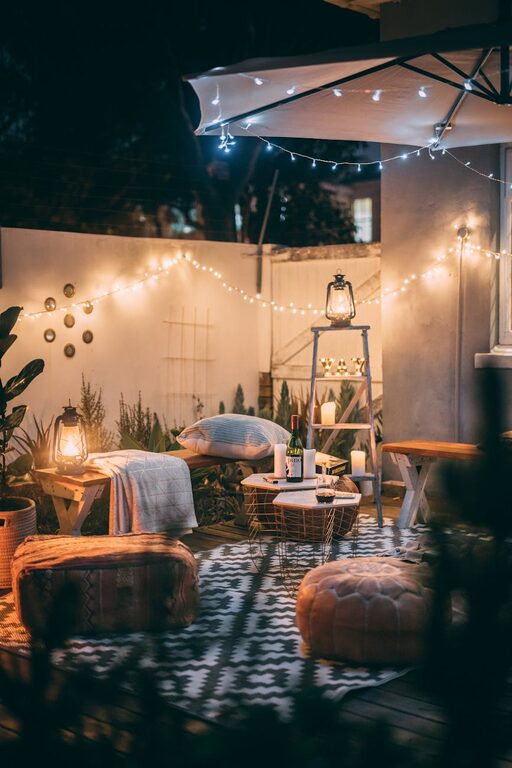Creating a comfortable and inviting atmosphere in your home starts with the right lighting. Whether you’re reading, cooking, relaxing, or working, proper lighting can enhance your mood and functionality. However, choosing lighting that is both comfortable and practical can be a challenge given the vast options available. This guide will help you understand key factors to consider when selecting home lighting that suits your lifestyle and enhances your space.
Why Comfortable Lighting Matters
Lighting affects how we perceive space and colors, impacts our mood, and can even influence our health. Poor lighting can cause eye strain, headaches, or a gloomy atmosphere, while well-planned lighting can uplift your environment and make daily activities easier.
Comfortable lighting means balancing brightness, color temperature, and placement to create a relaxing yet functional environment. Let’s explore how to achieve this.
Understanding Light Basics
Before choosing lighting fixtures, it helps to know some fundamental terms:
– Brightness: Measured in lumens, it indicates how much light a bulb emits. Higher lumens mean brighter light.
– Color Temperature: Measured in Kelvins (K), it describes the color appearance of light – warm (yellowish, around 2700K-3000K), neutral (3500K-4100K), or cool (bluish, 5000K+).
– CRI (Color Rendering Index): A scale from 0 to 100 showing how accurately a light source reveals the colors of objects. Higher CRI values (80+) mean better color rendering.
Tips for Choosing Comfortable Home Lighting
1. Consider the Purpose of Each Room
Lighting needs vary by room:
– Living Room: Opt for warm to neutral light, around 2700K to 3000K. This creates a cozy, relaxing atmosphere.
– Kitchen: Since this is a task-heavy space, brighter light (above 4000K) helps you see clearly while cooking.
– Bedroom: Warm light promotes relaxation and better sleep. Use dimmable lights to adjust brightness as needed.
– Home Office: Bright, neutral light (4000K to 5000K) reduces eye strain and keeps you alert.
– Bathroom: Bright, white light helps during grooming and makeup application.
2. Layer Your Lighting
Instead of relying on a single light source, create layers of different lighting types:
– Ambient Lighting: The main general lighting for a room (e.g., ceiling fixtures).
– Task Lighting: Focused lights for activities like reading, cooking, or working (desk lamps, under-cabinet lights).
– Accent Lighting: Highlights artwork, plants or architectural features and adds depth (spotlights, wall sconces).
Layered lighting allows you to adjust the mood and brightness levels depending on your activities.
3. Choose the Right Bulbs
Modern LED bulbs are energy-efficient and come in various styles and color temperatures. When selecting bulbs:
– Look for bulbs with high CRI values (80 or above) for natural color appearance.
– Choose the appropriate color temperature based on room usage.
– Consider dimmable bulbs for adjustable lighting.
– Check the lumens rating to ensure adequate brightness.
4. Use Dimmers for Flexibility
Installing dimmer switches lets you control the intensity of ambient and task lighting. This flexibility is useful for adjusting light according to the time of day, activity, or mood. Dimmer switches work well with most LED bulbs designed for dimming.
5. Focus on Light Placement
Proper placement reduces shadows and glare that cause discomfort:
– Position task lights close to your work area but angled to avoid direct glare in your eyes.
– Avoid placing bright lights directly behind seating areas to reduce eyestrain.
– Use lampshades or diffusers to soften the light output.
– Consider adjustable fixtures so you can change light direction.
6. Don’t Forget Natural Light
Maximize daylight by using sheer curtains or blinds and keeping windows accessible. Natural light:
– Boosts comfort and mood
– Reduces the need for artificial lighting during the day
– Helps regulate your sleep cycle
However, be mindful of glare or fading furniture by positioning seating or workspaces thoughtfully.
7. Match Lighting with Your Home Decor
Choose fixtures that complement your style while serving functional needs. For example:
– Modern homes may suit sleek, minimalist fixtures.
– Rustic or farmhouse styles benefit from warm-toned lamps or vintage bulbs.
– Industrial interiors pair well with metal or exposed bulb designs.
Balancing aesthetics with comfort ensures lighting enhances your overall home atmosphere.
8. Consider Energy Efficiency
Comfortable lighting doesn’t have to mean high energy consumption. Opt for energy-efficient bulbs like LEDs or CFLs, which save electricity and last longer. Also, use timers or smart lighting systems to reduce energy waste and customize lighting scenes.
Common Mistakes to Avoid
– Over-lighting: Too bright lighting can cause discomfort and wash out colors.
– Ignoring glare: Harsh, direct light in your eyes leads to strain.
– Using only one type of light: Flat lighting can make spaces feel dull.
– Neglecting maintenance: Dirty fixtures and bulbs reduce efficiency and light quality.
Final Thoughts
Choosing comfortable home lighting is about understanding your needs and balancing brightness, color, and placement for each room. Layered lighting, dimmers, and proper bulb selection improve functionality and ambiance. Always consider your lifestyle and preferences alongside energy efficiency and design. With thoughtful choices, your home can be a well-lit sanctuary that supports your daily activities and relaxation.
Take time to experiment with different fixtures and settings until you find the perfect lighting formula for your space. Comfortable lighting makes a big difference in how you feel and enjoy your home. Happy lighting!


